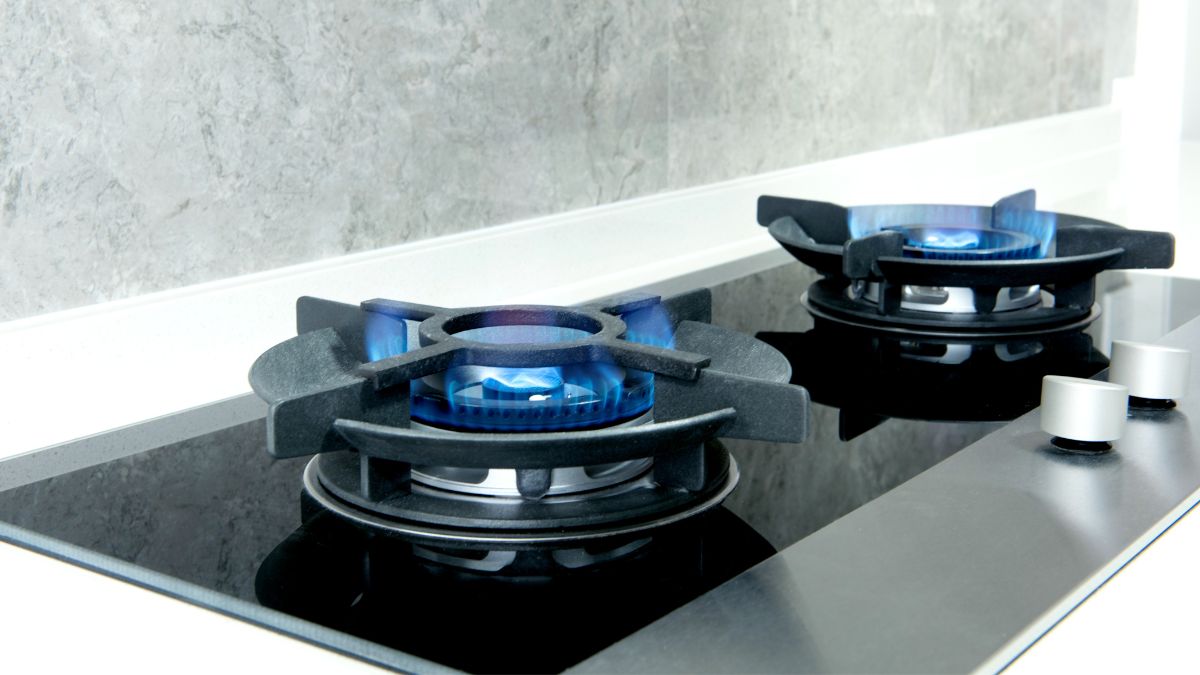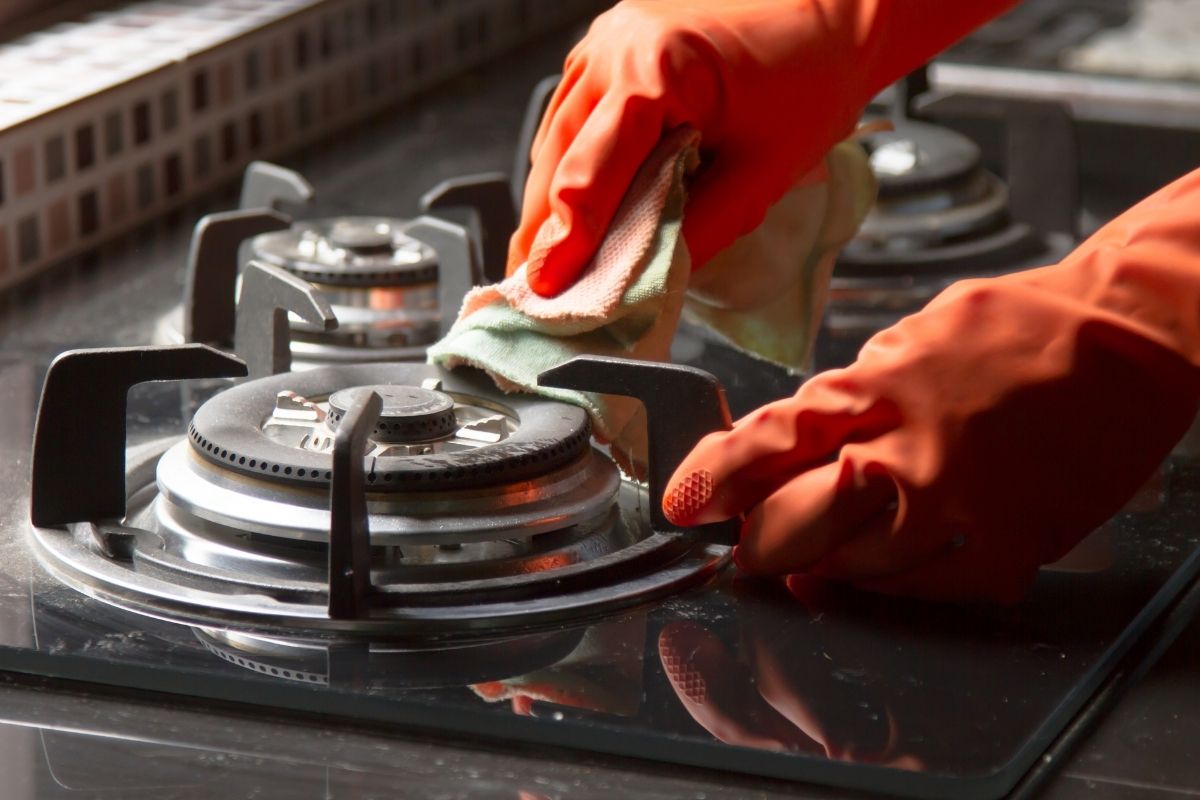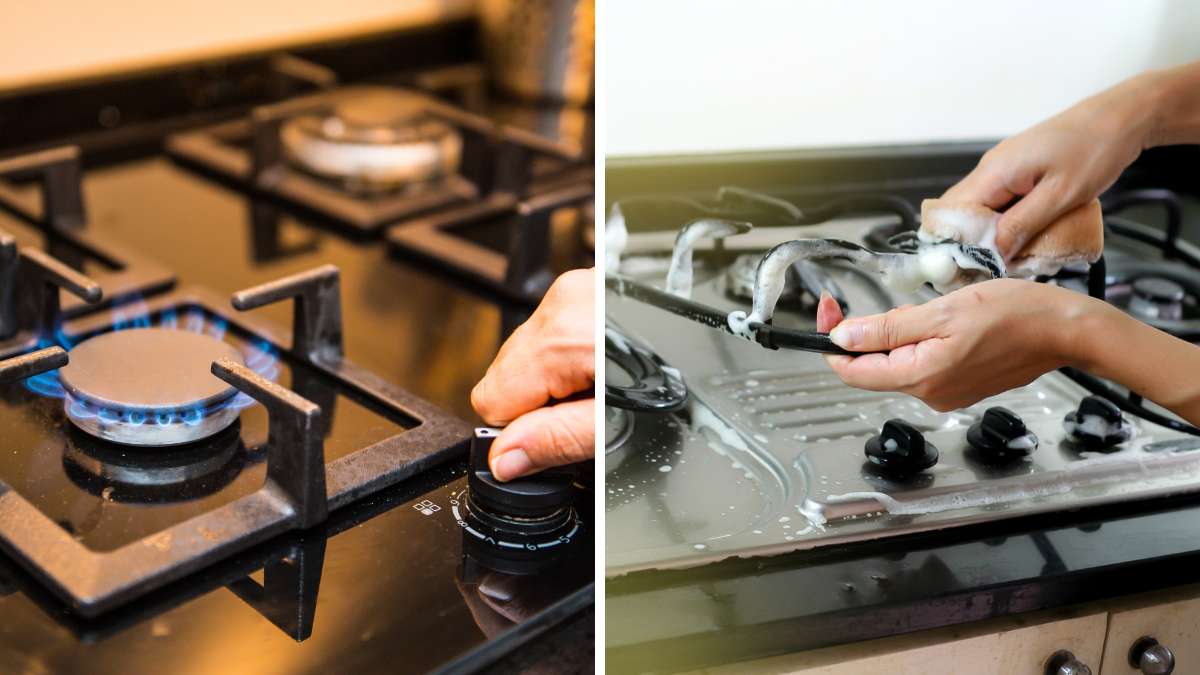
Form vs function, is an age-old problem that creeps up in various aspects of our life. One is always told that we have to pick one over the other and our struggles generally mostly revolve around finding the right balance between the two. The same is the case between Glass Top vs Stainless Steel gas stoves where you will find most people putting the debate in these terms only. However, it is not so simple between the two. There is a lot more that differentiates the two of them and it is up to you to go through your own requirements and then make the decision for yourself.
Both these types of materials have their own sets of pros and cons and your choice would change based on your own specific budget, cooking needs, and personal preferences. Our guide aims to provide you with a comprehensive guide that examines all the requisite factors that you should consider when making a choice between glass-top and stainless steel stoves.
Stainless Steel: The Workhorse Cooktop Material
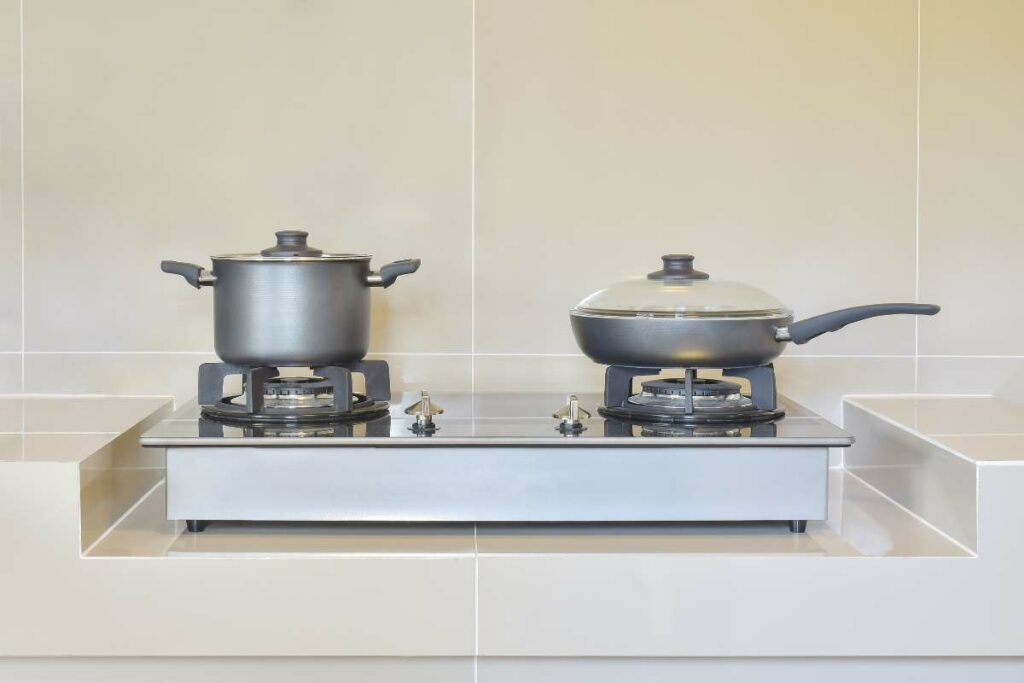
While glass cooktops provide flashy visual appeal, stainless steel remains the unflagging workhorse of gas stove surfaces. Although less sleek than glass, stainless has qualities that explain its continued prevalence among home chefs.
Extreme durability – Stainless steel stands up to daily wear and tear, resisting warping or denting under hot cookware. Top brands use heavy gauge steel for remarkable longevity.
Stain and rust resistance – Stainless steel alloys contain chromium that forms an invisible “passive layer” protecting the metal. This prevents rust and stains from taking hold when properly maintained.
Easy maintenance – Stainless needs little more than soap, water, and occasional polish to keep it looking clean. It won’t chip or degrade like paints or enamels.
Affordability – Simple stainless steel gas stoves are very budget-friendly. This makes them accessible options for most budgets.
Superior heat conduction – Stainless steel grates conduct heat extremely well. This allows for responsive burner control ideal for stove-to-table dishes.
With such performance benefits, it’s easy to see why stainless remains popular with cooks who want a durable, reliable gas range at a reasonable price point. It pairs especially well with pro-style models sporting multiple heavy duty burners.
Now that we’ve covered the broad pros and cons of each material, let’s do a direct side-by-side comparison of key factors.
Glass Top vs. Stainless Steel Gas Stoves Comparison
| Factor | Glass Cooktop | Stainless Steel |
| Durability | Prone to scratches over time. Risk of cracks from thermal shock. | Very durable construction that resists warping. |
| Ease of Cleaning | Spills and messes clean off smooth surface. | Requires cleaning individual grates and burner parts. |
| Appearance | Sleek, seamless design that is flush with countertops. | Exposed grates and burners have an industrial look. |
| Cost | More expensive than most stainless steel models. | Affordable price point, good value. |
| Temperature Control | Tendency to heat very evenly at medium to high settings. | Allows precise and immediate flame adjustment. |
| Safety | Surface remains cool to the touch when not in use. | Grates and burners always hot while stove is on. |
Based on these factors, we can draw some general conclusions about the strengths and weaknesses of each material:
- Glass excels in delivering a modern, streamlined look and cleans up easily. But it can be prone to surface damage over time.
- Stainless provides responsive cooking performance and durability at an accessible price. But requires more cleaning effort.
With that said, there are high-end and budget options available in both materials to fit varying needs.
Key Considerations When Purchasing a Gas Stove
Moving beyond the glass versus stainless debate, there are other important features to factor in when selecting a gas range:
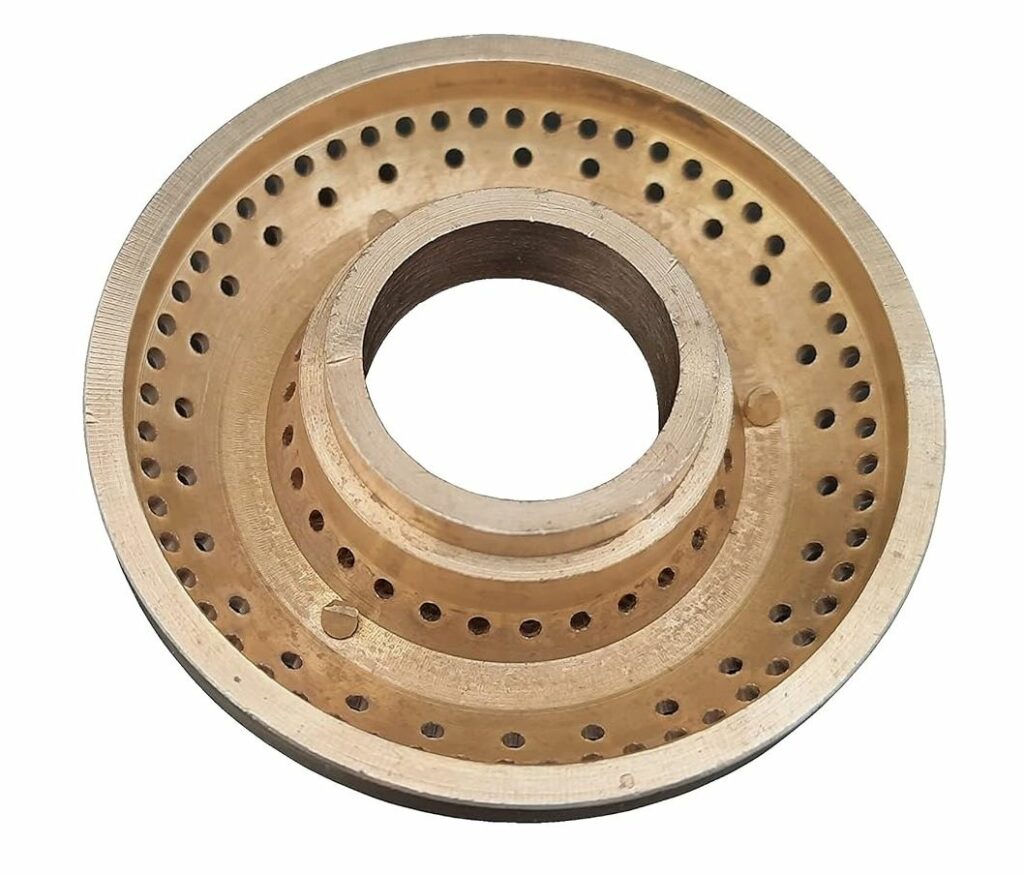
Burner Types, Size, and Configuration
- High BTU burners provide extra intense heat for fast boiling or searing.
- Low BTU burners allow precise simmering for delicate dishes.
- Bridge burners combine two burners into one large surface. Great for griddles or stock pots.
- Quantity of burners should fit your daily cooking demands. Home cooks may need 4-6 burners while pro-style ranges offer 6 or more.
- Layout configurations allow fitting burners, grates, and pans of different sizes on the cooktop.
Ovens and Additional Functions
- Single or double oven – More ovens provide extra baking flexibility.
- Convection cooking – Uses a fan to distribute hot air evenly for fast, even baking.
- Broilers or grills – Some models include high-heat broilers or lava rock grills.
- Warming drawers or trays – Keep food warm and ready to serve.
Design Aesthetics
- Knob and control styles – from commercial-look rubberized knobs to elegant metal handles.
- Finish options – Smooth polished steel or porcelain-coated color finishes.
- Fuel type – Propane or natural gas? This affects stove hookups.
- Width considerations – From slim apartment sizes to giant pro-style ranges.
By taking all these options into account, you can select just the right combination of features, performance, and design style for your kitchen and cooking repertoire.
Caring for Glass and Stainless Surfaces
To get the most out of your gas stove, proper care and cleaning are a must for either glass or stainless surfaces:
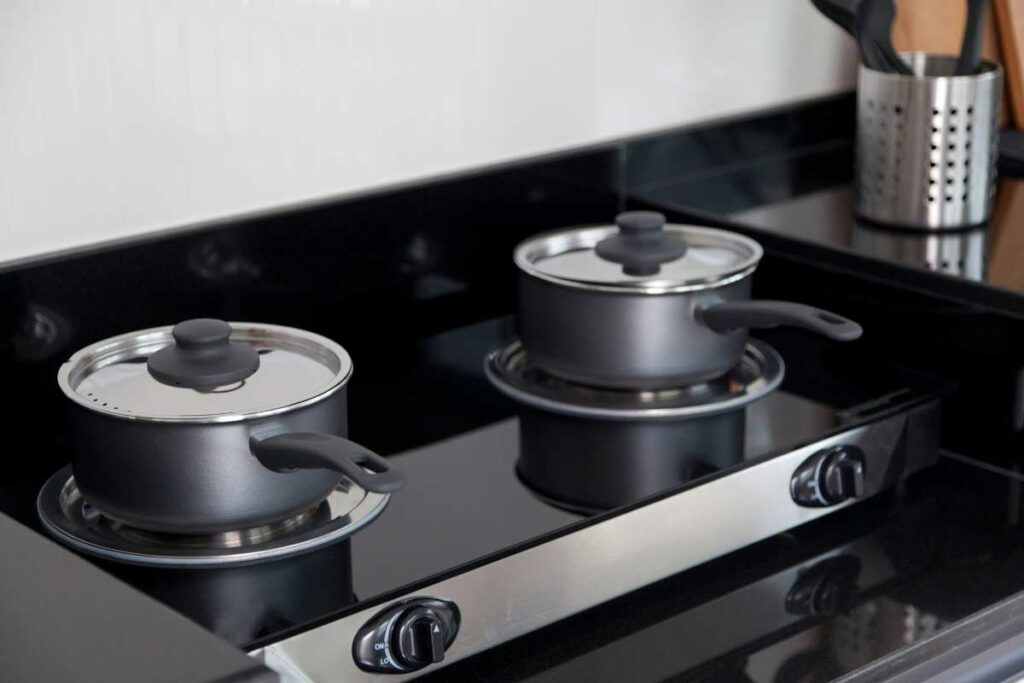
Daily Glass Cooktop Care:
- Wipe away spills and boil-overs promptly to avoid baked-on stains.
- Use a grease-cutting detergent and soft sponge or cloth to clean. Avoid abrasive scouring pads.
- Rinse and wipe away cleaning residue entirely.
- For hard water spots, use white vinegar followed by a thorough rinsing.
Weekly Glass Cleaning:
- Give the cooktop a deep clean by using a glass ceramic cleaning product. Many are formulated just for this purpose.
- For extra shine, polish with a glass cleaner after deep cleaning.
Stainless Steel Care Tips:
- After each use, wipe the cooktop with warm soapy water. Rinse and dry thoroughly.
- A stainless steel polish or cleaner helps keep the surface bright and removes minor scratches.
- For stuck-on food, use a non-abrasive scrubbing pad with soapy water.
- Avoid plain steel wool or brushes that can leave behind fibers and scratches.
- Use a vinegar solution to dissolve calcium and lime deposits.
Deep Cleaning Stainless Steel:
- Apply a stainless steel cleaner and let it soak for 5-10 minutes.
- Rub gently with a sponge or microfiber cloth in the direction of the grain.
- Rinse thoroughly and buff dry using a soft towel.
- For extra protection, apply stainless steel conditioner which adds an invisible layer of protection.
With regular care and cleaning tailored to the specific material, your gas stove cooktop can always look like new and avoid permanent damage.
Gas Stove Shopping Tips
When researching your options, having a game plan helps narrow down the choices:
- Set a budget and compare prices between glass and stainless models with similar features.
- Carefully measure your existing space or new kitchen layout. Verify stove dimensions.
- Make a list of the burner types, oven configurations, and other must-have features based on how you cook.
- Browse various styles online or in stores and shortlist the ones with the look you want.
- Read reviews and talk to friends or neighbors to hear first-hand experiences people have with their stoves.
- Take time making the choice between glass or stainless cooktops considering your cooking habits and kitchen style.
An informed buyer is a satisfied buyer. Doing your homework leads to choosing the perfect gas range for your needs.
The Final Decision: Glass or Stainless Steel?
At the end of the day, choosing between a sleek glass cooktop or durable stainless steel for your new gas range comes down to:
- For a showpiece stove, select glass which is a contemporary piece that impresses guests and is immaculate after cleaning up. The seamless surface complements well with stone or tile countertops. If you mainly boil, sauté, simmer, and stir-fry, go for glass to achieve a uniform heat distribution.
- Durable is better than beautiful: go for stainless steel if its durability and utility matters more than its looks. Stainless offers precise responsiveness suitable for frying, searing, or simmering sensitive sauces. Stainless will work fine for you if you cook often and you need a tough workhorse that is economical.
Regardless of the material you opt, select a gas stove from a reputable manufacturer that promises quality craftsmanship. Your new stove can last for several decades if it is well taken care of, giving you excellent gourmet cooking. Give your recipes their proper surface!











